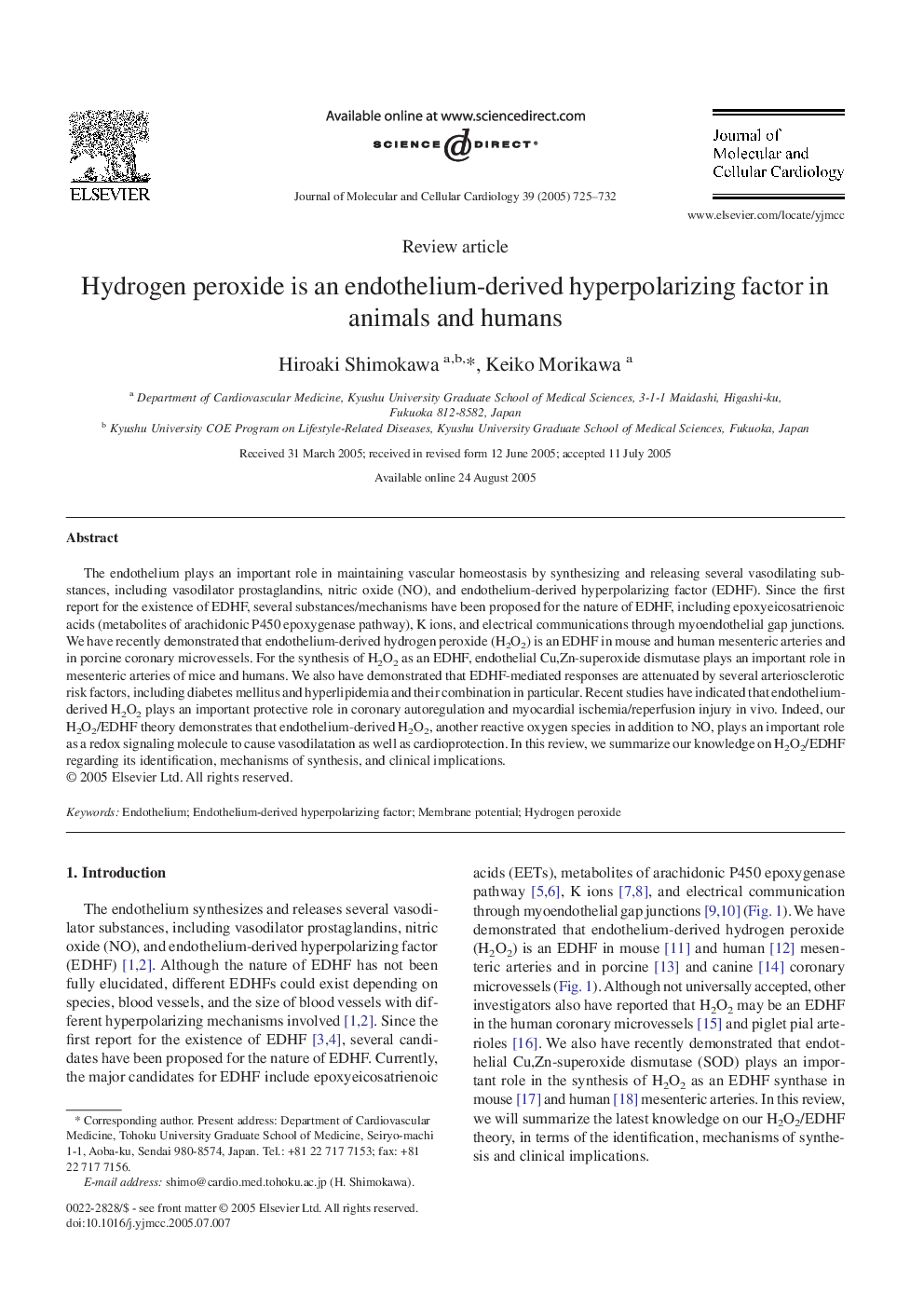| کد مقاله | کد نشریه | سال انتشار | مقاله انگلیسی | نسخه تمام متن |
|---|---|---|---|---|
| 10954389 | 1097901 | 2005 | 8 صفحه PDF | دانلود رایگان |
عنوان انگلیسی مقاله ISI
Hydrogen peroxide is an endothelium-derived hyperpolarizing factor in animals and humans
دانلود مقاله + سفارش ترجمه
دانلود مقاله ISI انگلیسی
رایگان برای ایرانیان
کلمات کلیدی
موضوعات مرتبط
علوم زیستی و بیوفناوری
بیوشیمی، ژنتیک و زیست شناسی مولکولی
بیولوژی سلول
پیش نمایش صفحه اول مقاله

چکیده انگلیسی
The endothelium plays an important role in maintaining vascular homeostasis by synthesizing and releasing several vasodilating substances, including vasodilator prostaglandins, nitric oxide (NO), and endothelium-derived hyperpolarizing factor (EDHF). Since the first report for the existence of EDHF, several substances/mechanisms have been proposed for the nature of EDHF, including epoxyeicosatrienoic acids (metabolites of arachidonic P450 epoxygenase pathway), K ions, and electrical communications through myoendothelial gap junctions. We have recently demonstrated that endothelium-derived hydrogen peroxide (H2O2) is an EDHF in mouse and human mesenteric arteries and in porcine coronary microvessels. For the synthesis of H2O2 as an EDHF, endothelial Cu,Zn-superoxide dismutase plays an important role in mesenteric arteries of mice and humans. We also have demonstrated that EDHF-mediated responses are attenuated by several arteriosclerotic risk factors, including diabetes mellitus and hyperlipidemia and their combination in particular. Recent studies have indicated that endothelium-derived H2O2 plays an important protective role in coronary autoregulation and myocardial ischemia/reperfusion injury in vivo. Indeed, our H2O2/EDHF theory demonstrates that endothelium-derived H2O2, another reactive oxygen species in addition to NO, plays an important role as a redox signaling molecule to cause vasodilatation as well as cardioprotection. In this review, we summarize our knowledge on H2O2/EDHF regarding its identification, mechanisms of synthesis, and clinical implications.
ناشر
Database: Elsevier - ScienceDirect (ساینس دایرکت)
Journal: Journal of Molecular and Cellular Cardiology - Volume 39, Issue 5, November 2005, Pages 725-732
Journal: Journal of Molecular and Cellular Cardiology - Volume 39, Issue 5, November 2005, Pages 725-732
نویسندگان
Hiroaki Shimokawa, Keiko Morikawa,